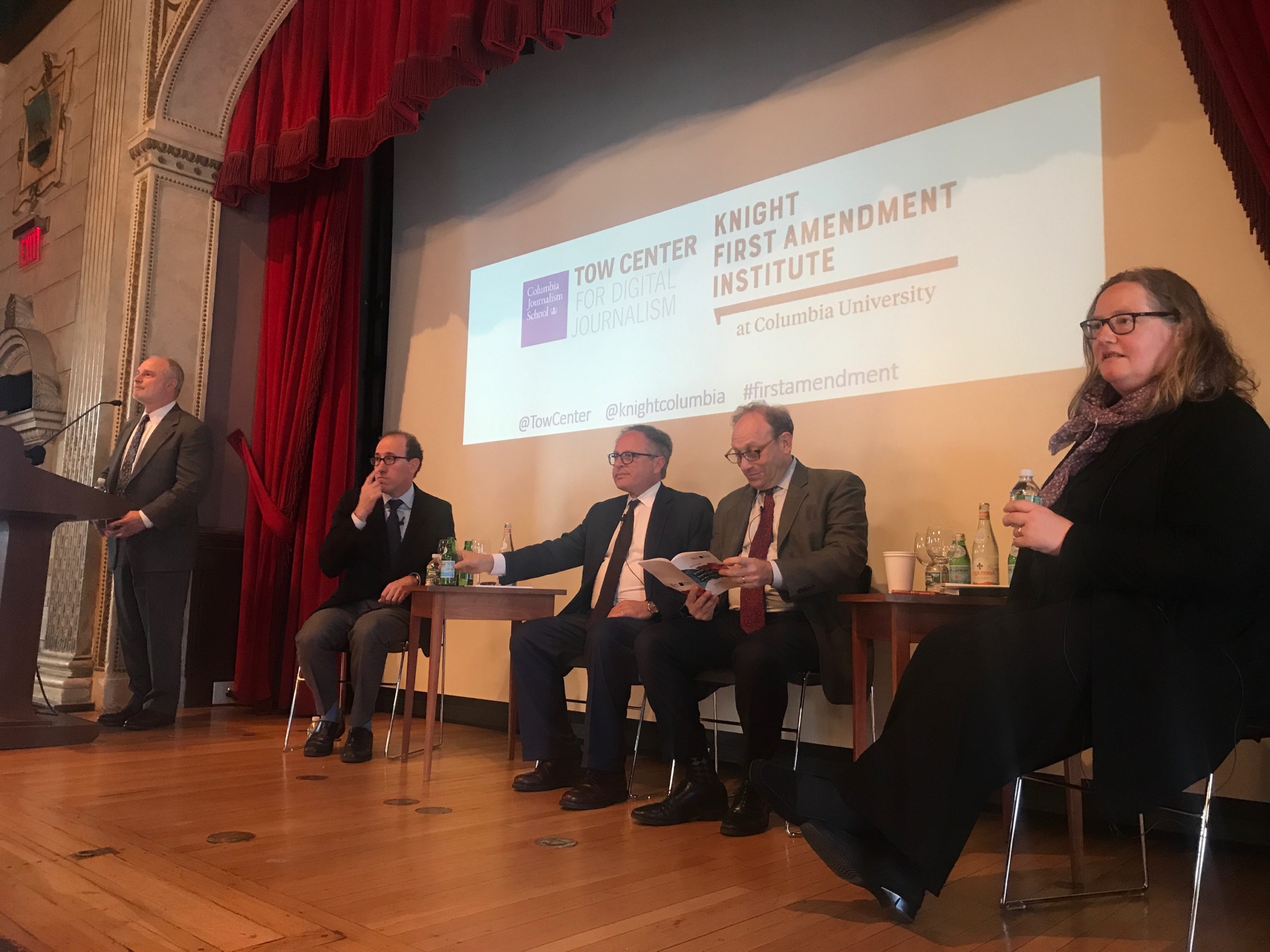The internet in its halcyon days was lauded as a open space that could promote free speech in the US and worldwide, but it is now a realm that has settled into domination by a few companies. As we enter an age in which the internet is fully integrated into our daily lives, the main channel by which we access information, a reconsideration of the values of the First Amendment is required.
This was the motivation for a symposium on May 1 at Columbia University called Disrupted: Speech and Democracy in the Digital Age. Attended by a mix of legal professionals, academics, and journalists, the message was clear: Legal thinking around the First Amendment must renew itself in the new era. The internet is deeply affecting the shape of public discourse. In turn, how can the values of freedom of expression, freedom of the press, and freedom of assembly shape and govern the digital space?
This was the first public event hosted by the Knight First Amendment Institute at Columbia University (the Tow Center for Digital Journalism was co-sponsor). The Institute will surely be at the center of this debate for years to come. The First Amendment Institute, now up and running after its inception last year under founding director Jameel Jaffer, will be dedicated to research, education, and litigation pursuing freedom of speech.
Law, by nature, is always catching up to technology. Leslie Kendrick, professor of law at University of Virginia, made the distinction between “east coast code” and “west coast code”—east coast code being the codified legal precepts, and west coast code being, well, all those lines written in computer language. East coast code, she said, is always behind west coast code; west coast code moves fast and is always inventing things the law cannot anticipate.
Legal efforts on behalf of the First Amendment have traditionally focused on the right to say things—the right to hand out pamphlets, as Tim Wu, professor of law at Columbia and contributing opinion writer for The New York Times, put it. But almost everyone on stage yesterday agreed that, with the internet, the right to say things is no longer under threat. Instead, there are a host of other threats enabled by the advent of the internet.
Now that anyone can publish freely online, one threat to free speech comes from the ability of companies or social media platforms to control who gets heard; how many readers newspapers reach; and which citizens have a voice in a cluttered online environment of bots and ads. Zeynep Tufekci, writer for the Times and professor of communications at University of North Carolina, wondered whether Twitter users leaving the platform because of harassment might be having their freedom of assembly violated. She also warned of new censorship techniques, in use now in China, which drown out anti-government speech rather than the traditional method of silencing. Teams of social media users linked to government agents pump out celebrity controversies, Tufekci said, at the same time other users are trying to raise the profile of the Tiananmen Square massacre.
Such censorship techniques take advantage of the fact that all of us have limited attention. And, as Wu has written extensively on, the entire internet is built so that our attention is the currency. Facebook, in particular, makes money off of being able to keep you on their platform, clicking. And they’ve become immensely good at targeting content to you. The data they have on individuals is unprecedented: no longer demographic, but individual and granular. New litigation around the First Amendment must pay attention to this market.
Another threat to freedom of the press is the breakdown of economic models. As Nicholas Lemann, formerly dean of the Journalism School at Columbia, put it, the big story in journalism now is not Trump, but the massive loss of jobs suffered in the past few years. Michael Oreskes, senior vice president and editorial director of NPR (and a CJR board member), emphasized that the greatest loss has been in local papers: Many city halls around the country are no longer covered. While the internet has been very good in making information available globally, local news has suffered because it does not have this universal appeal.
Addressing such questions—the economic downfall of journalism, the new attention market, a new type of censorship—will require a more imaginative view of the (quite brief) First Amendment, said Jamal Greene, professor of law at Columbia. Consider, he mused, if we passed a law limiting the number of people you could follow on Twitter to 50. In one sense, such a law would in conflict with the First Amendment—but in other ways, such a move might promote discussion and deliberation. How we will negotiate such cases will be the work of the coming generation.
The bottom line is that Twitter and Facebook are private companies that have become our primary sites for public discourse. The function of journalism—and indeed, the function of democracy—depends on upholding the First Amendment to preserve the public sphere.




